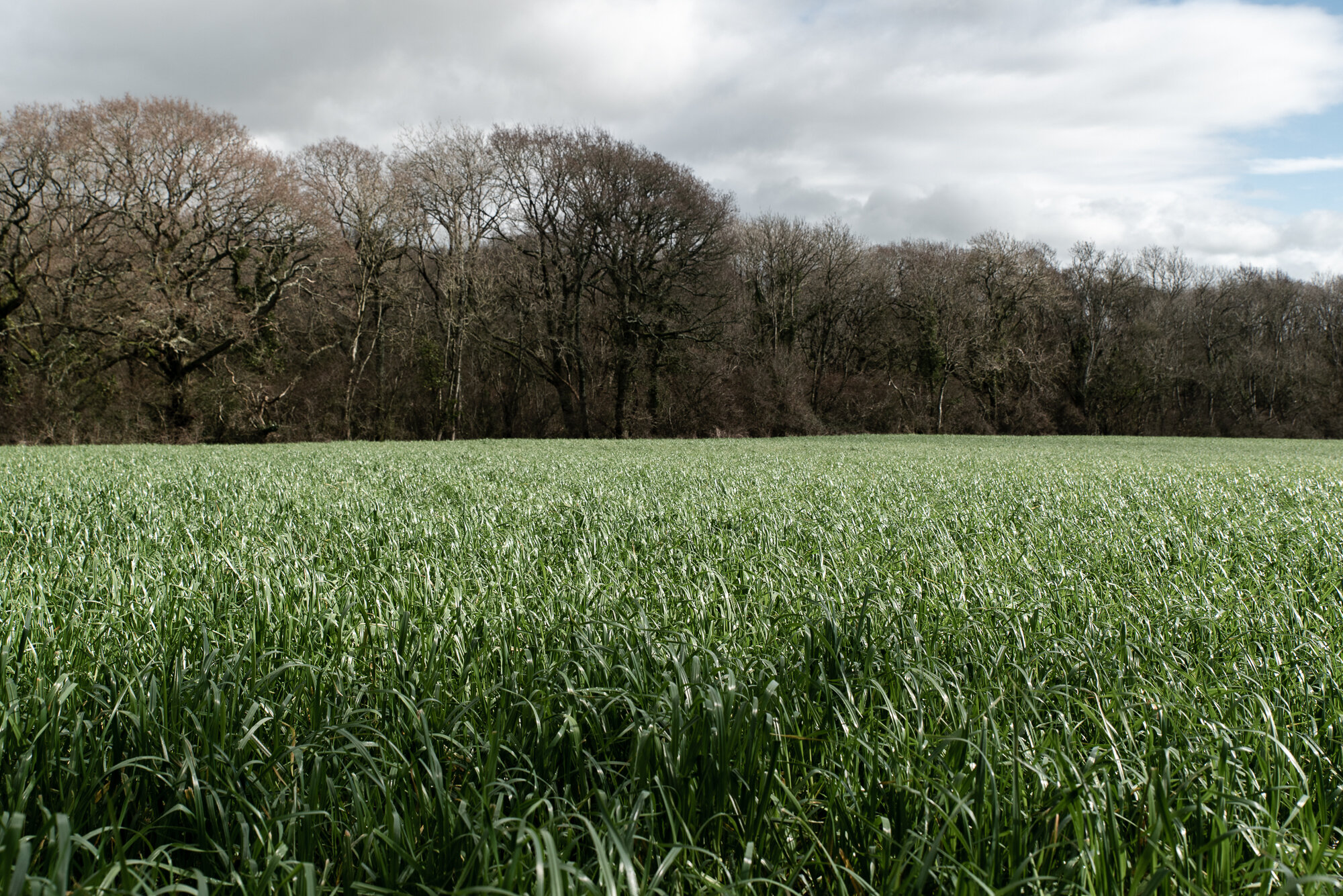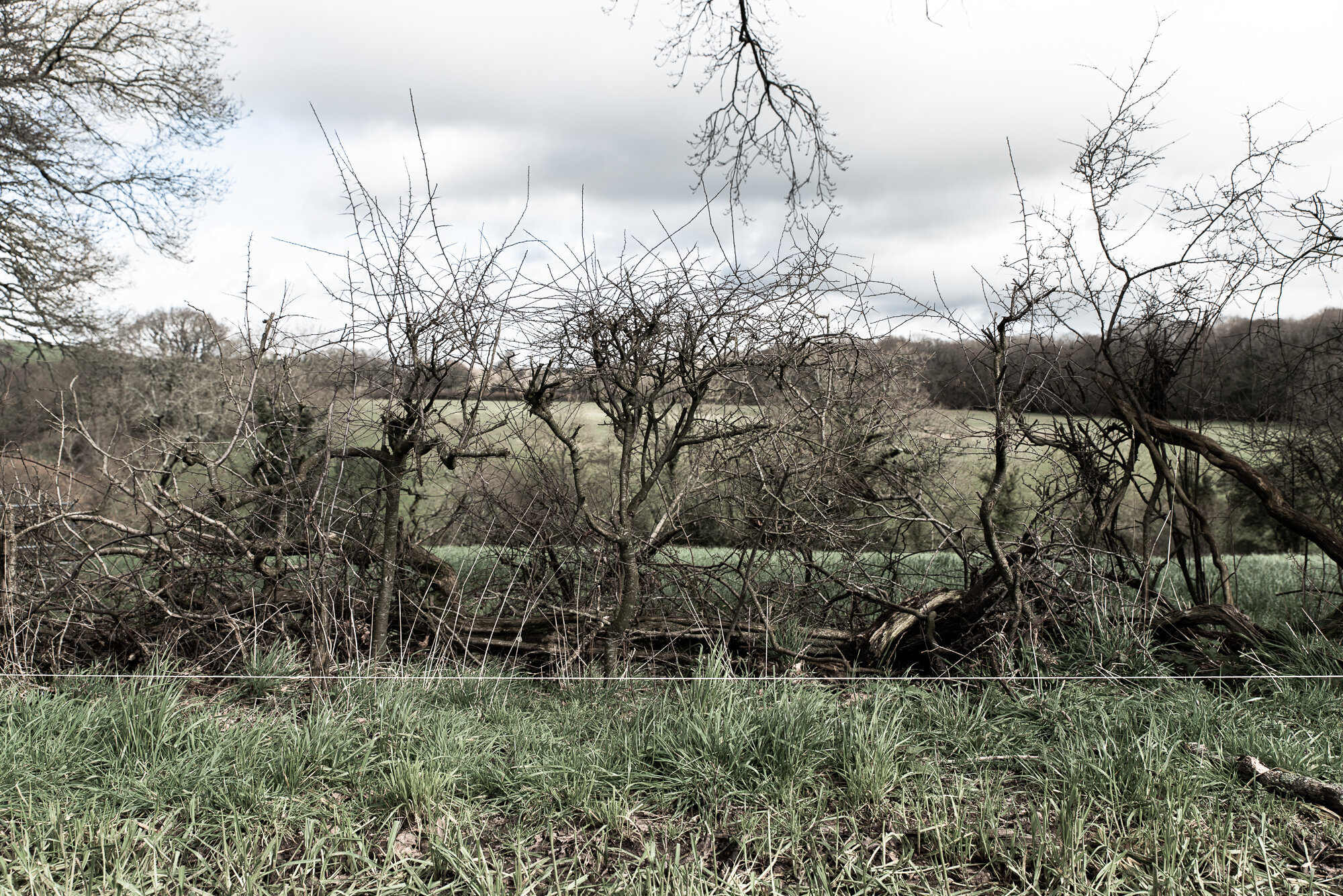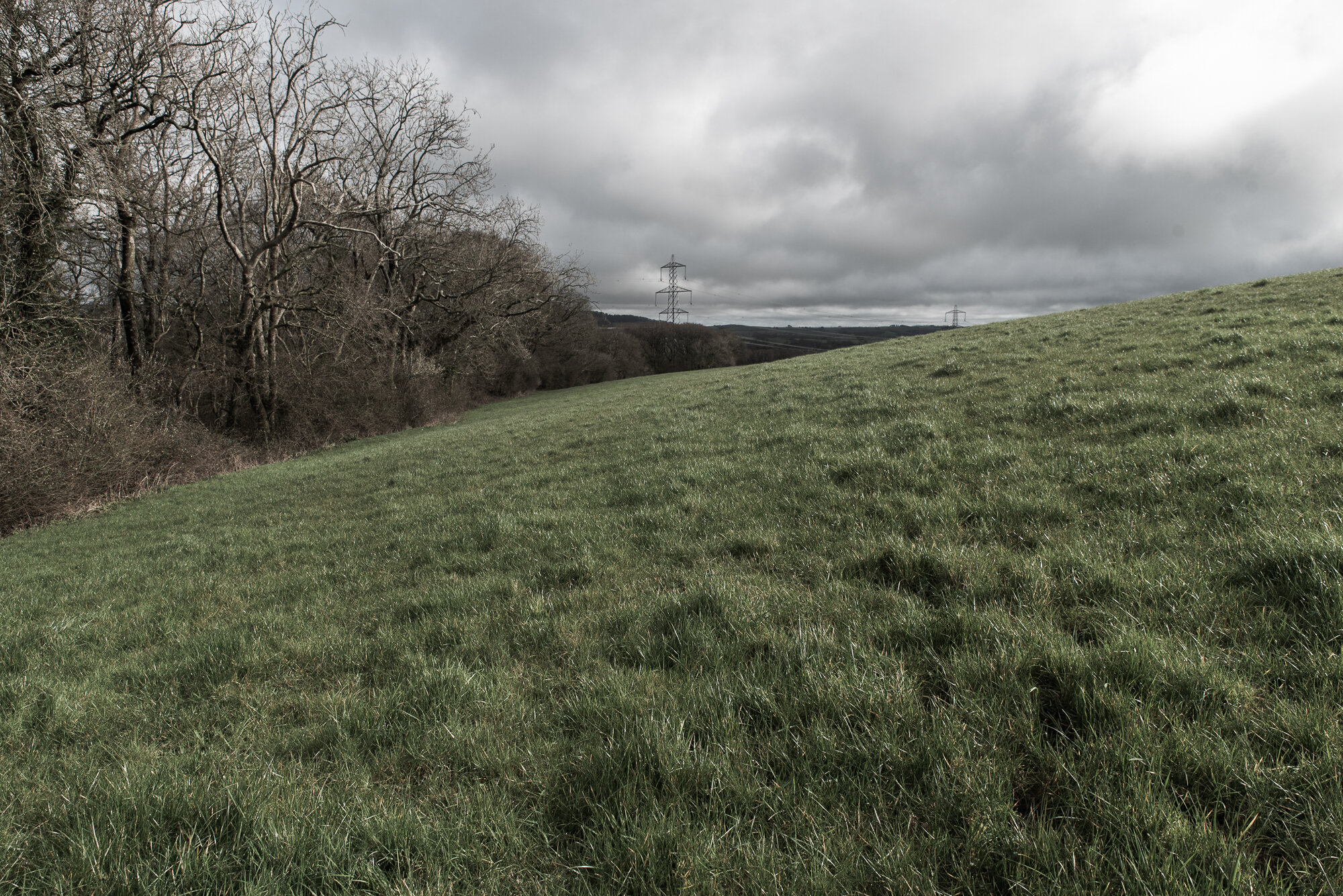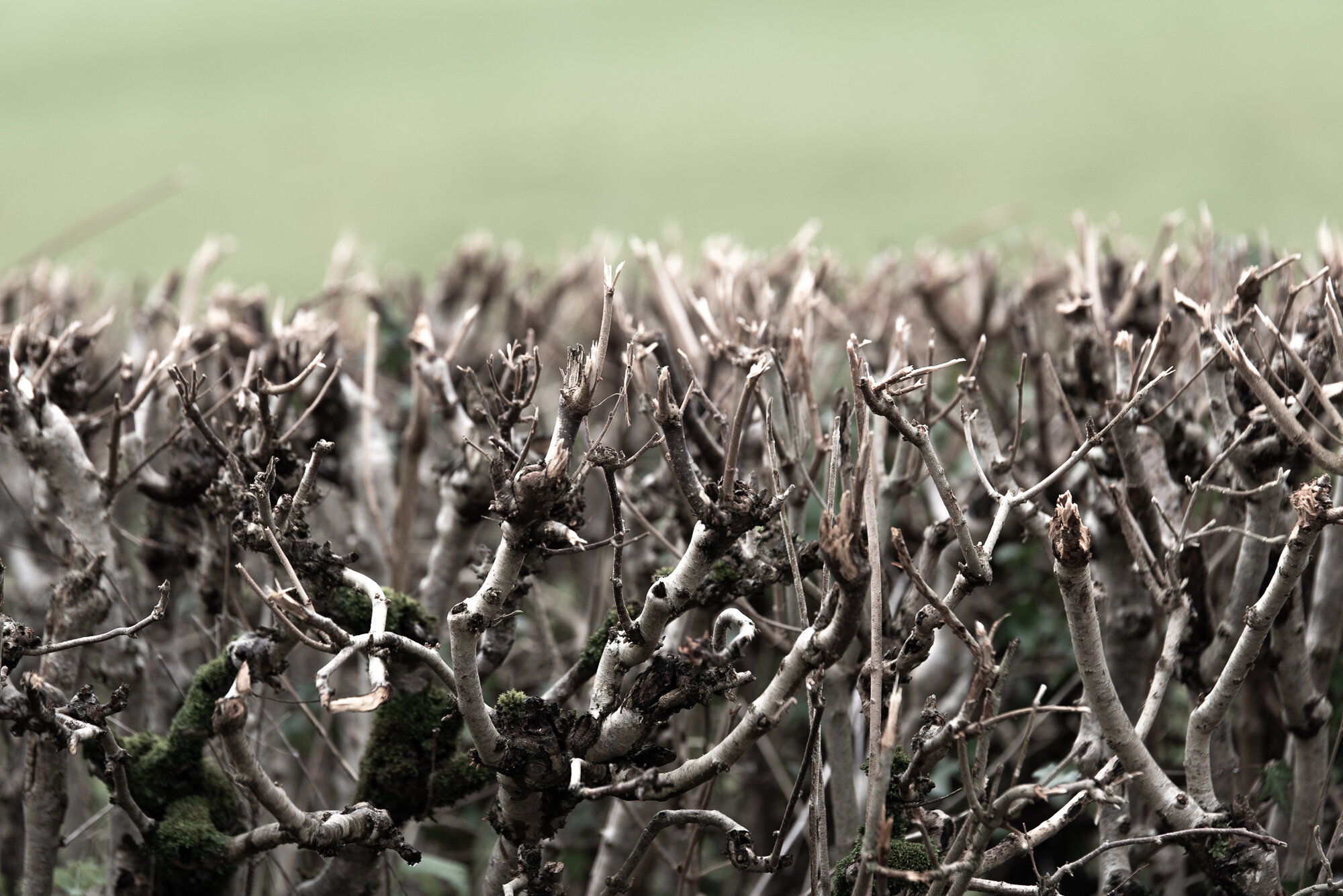Episode 2: James Fuller @ Northay Farm
“It would be nice to show that we could make a difference to an area of agricultural land without committing financial suicide”
James Fuller - engineer, dad, husband, curtain pole maker, farmer
James and Mel Fuller own Northay Farm in the idyllic Marshwood Vale in Dorset. I first met James on a rainy November day in 2019 with the ever-present Nick Gray from Dorset Wildlife Trust. Nick had been helping them to put in a Higher Level Stewardship scheme funding bid from the Government and as he knew of my plans for ‘What if you just leave it’, he thought it might be good for me to see what James is up to.
As with all of my case studies, the detail is in the audio rather then written out here, but alongside the photos I have some commentary and quotes. As we say in the audio, this is not rewilding per-se, but it is a step in the direction towards allowing natural processes to take place. As James was at the start of his journey, and me mine, I am going to be able to follow it as it develops, so will return to Northay regularly. So whilst he talks about the HLS scheme (see FAQs) and its targets, it is difficult to visualise that at this stage as very little has been done.
That said, his project has been so helpful for me to get my head around the world of farming for nature, and it has also been great fun working with James. So watch this space
My podcast including my interview with James can be found by pressing play here, or at the link below. The photos are best seen in the context of the audio.
The photos below represent a starting point for the work on Northay Farm, and as I follow it through, I hope you will see the changes (‘improvements’ - listen to the audio) as they happen.
“If you are in a hole, stop digging!”
Current use
Since James took over from the previous owners, the farm has been used primarily for grazing of beef cattle before they go off for ‘finishing’, and for quick-growing rye grass to be harvested as animal fodder; normally silage; so a level of intensification, but much less that the previous tenants. This is all changing, and talking to James more recently, he sees the areas of wood pasture that he is developing as being grazed by similar beasts, but that this could change to other, more hardy, varieties in due course.
The field of rye-grass needs a number of chemical treatments every year, and once harvested leaves almost no vegetative cover, leading to increased soil run-off, depletion of nutrients and reduced opportunity for biodiversity
Renewal
In the interview, James talked about the renewal of the farm after many years of intensive farming with diminishing returns. The photos below give some idea of the older elements of the farm, with an indication of the new, with James’s new ‘Shed’, the drone and new tree planting. Whilst this doesn’t relate so much to rewilding, they indicates a sense of late 20th Century farming, dominated by increasing chemical use, mechanisation and EU subsidies, which is very typical of the UK in a time before the current increasing ‘enlightenment’ about farming with nature. Whilst change happens slowly, and we will see it as it develops, the line that James is taking for renewal is along natural lines; less chemicals, less mechanisation and more technology as needed.
“Wouldn’t it be nice to bring 20 or 30 farms together, from the Golden Cap Estate, back from the coast all the way to Marshwood, and make it a massive corridor for nature. But in some ways you need a successful scheme to say to other farmers that this is a realistic route you can go down, with at least part of your land, the ugly bits, the marginal areas””
Corridors and boundaries
James talks about corridors, buffers and boundaries (see FAQs). The intensively farmed fields are adjacent to ancient woodland in the upper Char Valley but the lines of delineation are very sharp. Unfortunately there is very little in the way of natural field margins on this farm to create a more natural buffer zone. Some of the hedges across the property are also not either in a great state, with some being flailed and others just open - this leaves very little real space for birds, mammals and insects to thrive.
This project should change some of this. The wood pasture will run adjacent to the existing woodland, it will enable the species within that more diverse area to start to encroach into the fields - which will no longer have any chemical treatments or cutting. There is great scope for working better with hedges as natural corridors for biodiversity, and for connecting up areas of existing woodland; ‘exploding’ hedgerows is something seen at Knepp and other places. The size of the farm is small on the grand scale of things, and rewilding works best over large scale, but as James says at the end of the interview, you need examples to then show others what can be done and why it is important.
All of this will contribute to allowing natural processes to start to take more of a hold on the land, to allow the intensively used land to recover, to slow and then stop the decline of biodiversity and to allow it to start to recover.
The photos below show the boundaries between field and woods, hedges and the traditional Oak, sitting within a sparse hedge. Boundaries and boundary markers - notably fences - are important to people, but often irrelevant to nature. Putting aside the territorial behaviour of some animals, the lines we create are entirely artificial.





The final photo from this visit is taken within the old growth woodland along the stream. The variety of tree, both in species and stages of growth, along with the stream, dead wood and understory vegetation makes a great home for invertebrates, and hence a great feeding ground for birds, bats and small mammals. It also provides a natural corridor for species to move and expand their territory. I will be taking this photo in medium or large format black and white film, which will follow.
Inside the thin band of woodland in the headwaters of the river Char - adjacent to the intensively used fields
Drone shots
The photos below are taken from a drone to give you more of an idea of the farm and its surroundings. The quality of imagery is different to the photos above as it is fully automated and you cannot take photos in RAW, so any photo editing is limited, so please see these as a documentary ‘record’, rather than a ‘representation’ of the farm.
There is some video below which gives you an idea of the farm in winter. The flying could be better :) but it was my first go on the drone.
I hope you like the photos and the interview. The next one at Northay will show the creation of the new areas and the wild flower meadows. My thanks to James, Mel, Pickle and Olive, Slasher and Nick. Also, to you for listening and looking - please sign up to my email list here, and add a comment onto this case study if you wish.
If there are any terms that you don’t understand, please do look at the FAQs and links on the introductory page, or drop me a note and ask.
.. oh and its goodbye for now from Olive and Pickle


















